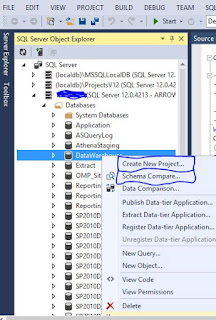-- List of Dimensions.
SELECT
[CATALOG_NAME] AS
Database,
[CUBE_NAME] AS
[Cube],
[DIMENSION_NAME] AS
[Dimension]
FROM
$SYSTEM.MDSCHEMA_DIMENSIONS
ORDER BY DIMENSION_NAME
-- List of Measures, along with MDX Formula for Calculated Measures.
SELECT
[CUBE_NAME] AS
[Cube],
[MEASUREGROUP_NAME] AS
[MeasueGroup],
[MEASURE_NAME] AS
[Measure],
[EXPRESSION] AS
[Calculation]
FROM
$SYSTEM.MDSCHEMA_MEASURES
ORDER BY
[MEASURE_NAME]
-- Dimension-MeasureGroup Relation.
SELECT
[CUBE_NAME] AS
[Cube],
[MEASUREGROUP_NAME] AS
MeasureGroup,
[DIMENSION_UNIQUE_NAME] AS
Dimension_Real_Name,
[DIMENSION_IS_VISIBLE] AS
Dimension_Visible,
[DIMENSION_GRANULARITY] AS
Dimension_Granularity
FROM
$SYSTEM.MDSCHEMA_MEASUREGROUP_DIMENSIONS
ORDER BY
[DIMENSION_UNIQUE_NAME]
-- Current Sessions along with Resource
Usage & Last Executed Command.
-- This can also be used to identify
long running queries.
select * from
$system.discover_sessions ORDER BY SESSION_LAST_COMMAND_ELAPSED_TIME_MS DESC
-- TO kill a long running query, note
the SESSION_SPID from the above query and execute the following XMLA command
<Cancel xmlns="http://schemas.microsoft.com/analysisservices/2003/engine">
<SPID>341157</SPID>
</Cancel>
-- Current Connections.
select * from
$system.discover_connections
-- Current Commands. For Currently executing command, Command_End_Time will be blank.
select * from
$system.discover_commands order by COMMAND_END_TIME




